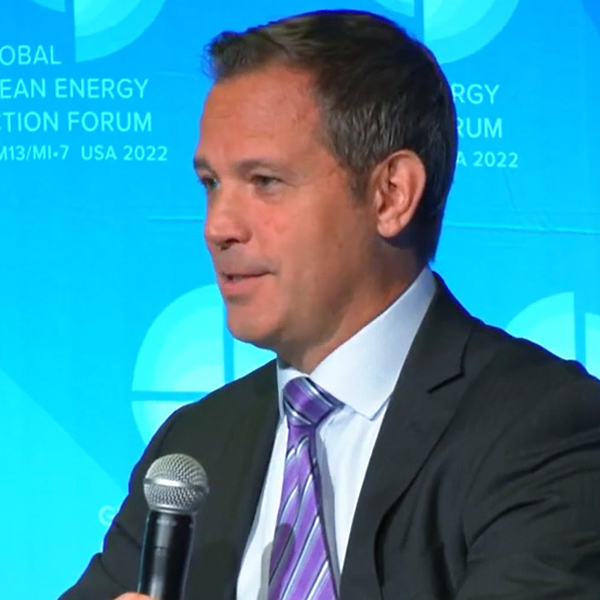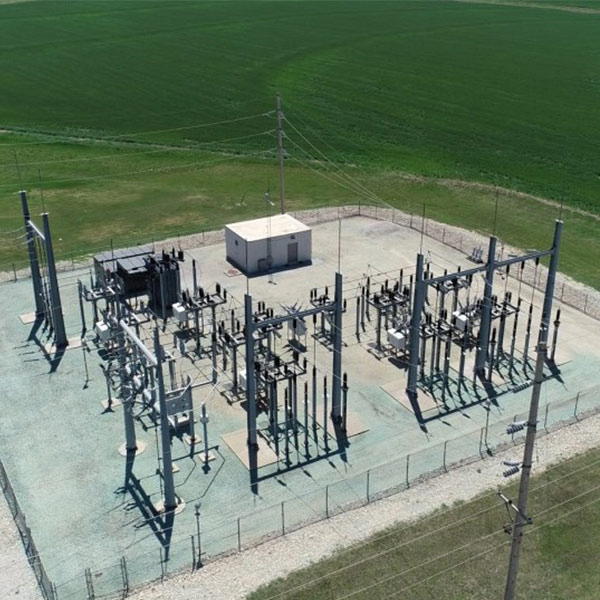Speakers at the Global Clean Energy Action Forum last week in Pittsburgh were almost giddy with excitement over Washington’s record climate funding commitments.
The conference followed a string of legislative actions: the CHIPS and Science Act, which could provide as much as $67 billion for climate research and zero-carbon energy development and deployment; the Infrastructure Investment and Jobs Act, which includes $8.5 billion to support battery supply chains and “clean” hydrogen manufacturing; and the Inflation Reduction Act, which includes almost $370 billion in energy and climate spending. Over the next decade, think tank RMI says, the three laws will more than triple the federal government’s historic climate spending.
It’s a stark turnabout from 2017, when President Donald Trump announced the U.S. would withdraw from the Paris Agreement, saying famously, “I was elected to represent the citizens of Pittsburgh, not Paris.” (See Trump Pulling U.S. Out of Paris Climate Accord.)
But the government funding will not ensure the transition needed to mitigate climate change, speakers at the conference said, without philanthropies continuing to provide grants, networking and expertise.
 Mike Boots, Breakthrough Energy | Global Clean Energy Action Forum
Mike Boots, Breakthrough Energy | Global Clean Energy Action ForumPhilanthropies will remain important in bridging funding gaps in the “innovation arc,” said Mike Boots, executive vice president of Breakthrough Energy.
In addition to the federal and state governments “providing more public money that’s ever been available … there’s a lot more private capital also in that mix,” he said during a panel discussion Thursday. “And yet, there is a need for philanthropic capital also to help [technologies overcome] technical … operational and engineering risks.”
Philanthropies also help connect governments with communities and help communities access funding, said Heidi Binko, executive director and co-founder of the Just Transition Fund. “It’s an incredible opportunity, where we’ve got billions of dollars available for transitioning energy communities through the American Rescue Plan; through the bipartisan infrastructure law; and now in a very exciting way through the Inflation Reduction Act,” she said. “But we also know that just because the money is there does not mean that it’s going to flow to the people who need it the most.”
Charities also are key to helping emerging countries skip fossil fuels in their economic development, said Ashvin Dayal, who leads the Rockefeller Foundation’s Power & Climate program.
“Internationally, there’s over 700 million people who still lack access to a basic electricity connection. There’s about 2.5 billion people who are considered energy poor, i.e., they need to consume significantly more, not less, energy in order to lift themselves up,” he said. “Even if the OECD [Organisation for Economic Co-operation and Development] economies and China achieve their net-zero ambitions … if the rest of the emerging world continues to grow their energy consumption on a business-as-usual fossil fuel-dependent path, we will not get anywhere close to 1.5 degrees [Celsius], let alone 2 degrees.”
‘Blended Finance’
Billionaire Bill Gates founded Breakthrough Energy — a network including investment funds, nonprofit and philanthropic programs — to scale the technologies need to reach net-zero emissions by 2050.
Boots said there are many emerging technology startups that have received venture capital and other private funding. “And yet, at the end of their venture capital run, often their product is still too expensive in the market to get the uptake. It needs to scale.”
The funding promised by Washington and European governments is “a significant amount of public money.”
“And yet, even with that public money, and even with some private money coming off the sidelines, there’s not often enough of the right flavor of capital … to fully flesh out that capital stack and to make those projects get over the finish line.”
Boots said the organization’s new initiative, Breakthrough Energy Catalyst, will be a “blended finance platform.”
“What we imagine is some of the money from the infrastructure bill and some of the money from the Inflation Reduction Act will capitalize part of that stack. We are going to come in then with a blend of some philanthropic capital — some very concessional equity that will allow those hydrogen projects and those [direct air capture] projects and those long-duration energy storage projects.”
Building ‘Capacity’ in Community Groups
Just Transition Fund’s Binko said philanthropies can help under-resourced communities overcome barriers to obtaining the funding becoming available.
She cited a $62.8 million Build Back Better Regional Challenge grant recently awarded by the U.S. Department of Commerce’s Economic Development Administration (EDA) to the Appalachian Climate Technology Coalition (ACT Now) in West Virginia.
 Heidi Binko, Just Transition Fund | Global Clean Energy Action Forum
Heidi Binko, Just Transition Fund | Global Clean Energy Action Forum“Without philanthropy, they would have not built up the capacity to be able to access those federal funds. And so we’re in a moment where that’s needed now, but in a really coordinated and big way,” she said.
In recent months, Binko said, her group has been contacted by numerous federal agencies, including EDA, EPA, the Department of Energy and the Appalachian Regional Commission, a partnership of the federal, state and county governments. “They know that we’ve been working really closely with energy transition communities for over a decade. And they’ve reached out and they’ve said to us, ‘Who are the hardest hit? How do we reach them?’”
Binko said her organization is about to launch a Federal Access Center, which will share with the agencies recommendations it hears from its community partners. Among the plans: town hall listening sessions with agency leads “so they can hear the best and brightest of ideas from our communities,” Binko said.
Role in Emerging Markets
The Rockefeller Foundation’s Dayal said philanthropies have a crucial role in helping emerging markets deploy new technologies, provide capital to decarbonize coal and develop “the business models that can help scale up innovative distributed renewable solutions, or even get grid-tied renewables deployed at scale.”
“In economies like South Africa, Indonesia or my own country, India, that is going to require a momentous coming together of different types of capital,” he said. Philanthropy should be “at the base of that stack, providing that first loss; taking the highest risk possible to test and scale a solution.”
He cited the “de-risking” needed to build “metro grids” in a country like the Democratic Republic of Congo, where “100 cities could be electrified with off-grid large-scale solar.”
 Ashvin Dayal, Rockefeller Foundation | Rockefeller Foundation
Ashvin Dayal, Rockefeller Foundation | Rockefeller Foundation“But you don’t exactly have companies rushing in because there’s political risks; there’s demand risks; there’s contract risk — there’s all of these risks that have to be taken off the table,” he said.
To address the gap, the Rockefeller-funded Global Energy Alliance for People and Planet is seeking to bring together “different shades of investment capital” from private sources, philanthropies and development finance institutions like the World Bank and African Development Bank.”
“[We’re] trying to build an alliance that can go after transformational projects in a much more coordinated and accelerated way,” he said. “Because right now, it’s too slow; it’s too fragmented. And we’re not going to get there.”
Proving a technology in the OECD countries does not mean that it will be affordable in emerging nations, he said.
In Nigeria, which is 50% unelectrified, distributed diesel accounts for about 60 GW of generation, compared to only 10 GW on the grid. “So there’s a huge amount of interest in deploying solar microgrids, electrifying markets, businesses, small communities,” Dayal said. “But the cost of lithium ion … in Nigeria is still three times what it is here. The cost of even PV is still 20% or 25% more than what it is in the United States.”
In response, Dayal’s organization is working with local financiers and technology companies to create a “pool procurement vehicle.”
“We piloted it just last year, and even before the ink was dry, we were able to drop the costs by about 30%, because you brought 15 or 20 small developers together and do a single procurement,” he said.
Dayal said he is often asked why his foundation is contributing funding to the U.S.’ Net Zero World Initiative — which will match developing countries with DOE’s National Laboratories to create and implement climate solutions — when the government “has all of these resources.”
“And the answer is, because this is about building new types of partnerships that don’t currently exist. And that’s really the key to this: We have to really unlock the synergy. And that’s where I think philanthropy has to be more risk-taking and, frankly, be putting more of its resources into this space. It’s still woefully underfunded.”


